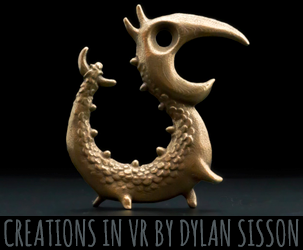


Spider-Man: Across the Spider-Verse: A Truly Diverse Cosmos
by Maria Elena Gutierrez
Very occasionally, a film appears that raises the bar of cinema above all expectations. Spider-Man: Into the Spider-Verse, released in 2018, was just such a film. Could the sequel, Spider-Man: Across the Spider-Verse, possibly reach the same dizzying heights? The answer is a resounding “yes.”
In the new film, teenage Miles Morales (Shameik Moore) is settling into his new identity as Spider-Man, fighting crime while also struggling to live up to his parents’ expectations. When he encounters the Spot (Jason Schwartzman) – a villainous scientist whose body is perforated by inter-dimensional portals – Miles is whisked across the cosmos to the Spider Society, which unites versions of Spider-Man collected from across the multiverse. In the adventures that follow, Miles rekindles his relationship with Gwen Stacy (Hailee Steinfeld), unwittingly becomes the enemy of the Spider Society, and discovers shattering truths about his own identity.
This brief synopsis does little justice to a film that is filled with extraordinary ideas, powerful themes and inspiring visuals. At its heart is the concept of the multiverse, which explores the thesis that, in an infinite cosmos, anything is possible. The multiverse has deep roots in both science fiction literature and the “many worlds” theories that spring from modern quantum physics research. It is remarkable that such a complex and rarefied concept has penetrated the mainstream to the point where it can now form the backbone of a blockbuster animated feature.
Directed by Joaquim Dos Santos, Kemp Powers and Justin K. Thompson, Spider-Man: Across the Spider-Verse, leans heavily into the multiverse concept by presenting audiences with a thrilling display of wildly varying graphic styles. Here is not just a single vision of reality, but a dazzling fireworks display that explores multiple versions of reality, each with its own unique character. While the look and feel of Miles’s home universe is familiar to us from the first film, Gwen’s world is a realm of painterly backgrounds and soft-focus lighting. The slick futuristic world of Miguel O’Hara (Oscar Isaac) contrasts vividly with the hectic excitement of the India-themed Mumbattan, and the jagged anarchy of the Spider-Punk universe.
When all these different elements crash together, the result is gorgeous explosion of light and color. Yet the collisions of style always make sense, and always pay off with humor, drama or a profound sense of wonder. There is nothing gratuitous here – the creative choices are far from random. Here is a group of filmmakers who have given themselves the broadest palette imaginable, and used it with complete mastery of their craft.
However, the multiverse is more than just a mind-boggling landscape through which multiple versions of Spider-Man can swing. It is also the ultimate expression of the film’s core theme of representation and diversity.
As a mixed-race teenager with African-American and Puerto-Rican parents, Miles Morales is dealing with all the societal and human challenges faced by any boy of his age. However, when he enters the multiverse, he experiences diversity at a level beyond anything he could have imagined. Critically, so does the movie audience. At the same time, Gwen Stacy joins Miles center stage as a complex character with clearly defined strengths and weaknesses. As such she is a welcome addition to the growing pantheon of strong female characters who are inspiring girls and young women around the world.
There is one final ingredient that truly elevates Spider-Man: Across the Spider-Verse to the level of art – the character dynamics. One moment Miles is engaged in a domestic argument with his parents, the next he is battling villains with astonishing superpowers, while also trying to understand and accept his place in the world. Every character he engages with helps him to perceive the world in a different way. Through the empathetic power of cinema, the audience is invited to see things through Miles’s eyes – and soon we begin to see things differently, too.
All these factors leave us asking a profound question. In the face of such boundless variety, presented in such an entertaining and engaging way, how can we not accept the simple and obvious fact that diversity is hard-wired into the fabric of reality? Spider-Man: Across the Spider-Verse invites us to open our eyes to the world around us. As soon as we do this, we see that everything is normal.
Dr. Maria Elena Gutierrez is the CEO and executive director of VIEW Conference, Italy’s premiere annual digital media conference. She holds a Ph.D. from Stanford University and a BA from the University of California Santa Cruz. VIEW Conference is committed to bringing a diversity of voices to the forefront in animation, visual effects, and games. For more information about the VIEW Conference, visit the official website: http://viewconference
Subscribe to the VIEW Conference YouTube channel:
https://youtube.com/c/
Facebook: https://facebook.
YouTube: https://youtube.com/
Twitter: @viewconference
Instagram: view_conference
VIEW Conference newsletter: Sign up here
#viewconference2023































